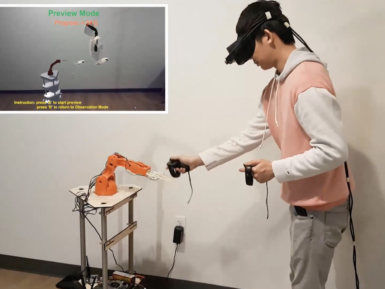
Arduino PLC Starter Kit
Plug into the future of industrial automation with the PLC Starter Kit, designed to bridge between theory and practice, closing the gap in current PLC education and preparing students for real-world challenges.
Overview
Programmable Logic Controller (PLC) technology is vital for industrial automation, but gaps still exist between current PLC education and industry. To cultivate a robust industrial workforce, Arduino introduces a dedicated educational kit - Arduino PLC Starter Kit.
With this kit, you get 20+ hours of lessons with the Explore PLC course. Your students can learn about Programmable Logic Controllers, Modbus RS-485 communications, and integration with industrial simulated systems, among other comprehensive topics.
There’s also support for five PLC programming languages, which means you can program the kit effortlessly using the Arduino PLC IDE. This user-friendly environment simplifies PLC programming for both you and your students. Choose from any of the five programming languages defined by the IEC 61131-3 standard (Ladder, Functional Block Diagram, Structured Text, Sequential Function Chart, or Instruction List) to swiftly code PLC applications or port existing ones to Arduino Opta.
Additionally, the Arduino Opta WiFi can be programmed and integrated into an industrial automation system with our powerful IDE 2. The Arduino IDE 2 is a huge improvement on our classic IDE, with increased performance, improved user interface, and many new features, such as autocompletion, a built-in debugger and syncing sketches with Cloud.
Cloud-ready hardware
The PLC Starter Kit integrates seamlessly with Arduino Cloud services for IoT projects, enabling remote control functionalities for both classroom and real-world scenarios. This is our simplest and low-code way to get started with connected projects.
All hardware provided with the kit is also fully documented in our Arduino Docs page, where hundreds of tutorials, datasheets, guides and technical documentation are published.
Key benefits include:
- Pro industrial automation with reliability and power for complex projects
- Learning content that aligns with the industrial automation curriculum
- Programming that is easy, approachable, and efficient
- Dive straight into practical applications with Arduino's signature ease-of-use, flexibility, and a vast library of software
Course: Explore PLC
With 20 hours of projects and many more tutorials, you have everything you need to teach programmable logic control in your classroom.
Projects include getting started, an introduction to the software, PLC history, communication protocols, digital input simulator learning, networks, and counting - all accessed through one easy-to-use portal connected to the Arduino Cloud.
Need help?
Check the Arduino Forum for questions about the Arduino Language, or how to make your own Projects with Arduino. You can also find out more about Arduino Cloud for Schools here.
If you need any help with your product, please get in touch with the official Arduino User Support as explained in our Contact Us page.
Tech specs
| Arduino Opta WiFi |
|
| Arduino DIN Simul8 |
|
| Arduino DIN Celsius |
|
| Other |
|
| Programming languages |
|
Conformities
Resources for Safety and Products
Manufacturer Information
The production information includes the address and related details of the product manufacturer.
Arduino S.r.l.
Via Andrea Appiani, 25
Monza, MB, IT, 20900
https://www.arduino.cc/
Responsible Person in the EU
An EU-based economic operator who ensures the product's compliance with the required regulations.
Arduino S.r.l.
Via Andrea Appiani, 25
Monza, MB, IT, 20900
Phone: +39 0113157477
Email: support@arduino.cc
Documentation
Arduino Opta WiFi
Pinout Diagram
Download the full Pinout diagram as PDF here.
Arduino DIN Simul8
Arduino DIN Celsius
Get Inspired

As robotics advance, the future could certainly involve humans and automated elements working together as a team. The question then becomes, how do you design such an interaction? A team of researchers from Purdue University attempt to provide a solution with their GhostAR system. The setup records human movements for playback later in augmented reality, while a robotic partner is programmed to work around a “ghost” avatar. This enables a user to plan out how to collaborate with the robot and work out kinks before actually performing a task. GhostAR's hardware includes an Oculus Rift headset and IR LED tracking, along with actual robots used in development. Simulation hardware consists of a six-axis Tinkerkit Braccio robot, as well as an Arduino-controlled omni-wheel base that can mount either a robot an arm or a camera as needed. More information on the project can be found in the team's research paper. With GhostX, whatever plan a user makes with the ghost form of the robot while wearing an augmented reality head mount is communicated to the real robot through a cloud connection – allowing both the user and robot to know what the other is doing as they perform a task.The system also allows the user plan a task directly in time and space and without any programming knowledge.First, the user acts out the human part of the task to be completed with a robot. The system then captures the human’s behavior and displays it to the user as an avatar ghost, representing the user’s presence in time and space.Using the human ghost as a time-space reference, the user programs the robot via its own ghost to match up with the human’s role. The user and robot then perform the task as their ghosts did.














